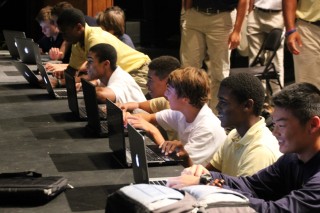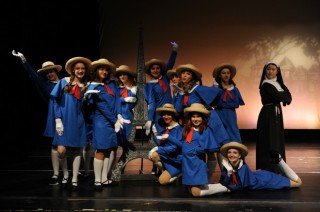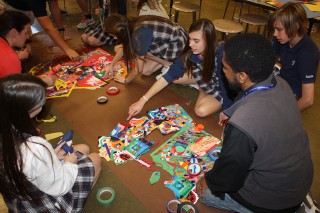St. Luke’s School hosted its second annual 48-hour Hackathon. More than sixty students (and a few parents) participated, including 12 students and faculty guests from Wooster School. The goal of the Hackathon is to immerse in creating something…anything. A toy, a game, a serious solution to a problem. Something you wish existed but doesn’t—yet. “We had only one hard and fast rule,” said St. Luke’s designLab Director and lead Hackathon “conspirator” Michael Mitchell. “Take your concept and try to make it a reality in the next forty-eight hours.”
Hacks ran the gamut from a unicorn with a light up horn, to a lie detector. “We wanted to build a hoverboard,” said 7th grader Adrian Antonioli. “We could not get that to work, so we built a car that moved by using a big fan. That worked.”
The winning Middle School hack was a Raspberry Pi-based robot which streams live video to a website and can be wirelessly controlled from any point in the school. The robot was created by seventh grader Jack Briggs. The winning Upper School hack was an arcade-style Monopoly game created by tenth graders Bilal Memon and Dominic DeMarco. The team wrote more than 1,000 lines of Java code, used an Arduino and buttons to interface with the players, and created a retro game console cabinet using the laser cutter.
One thing all the hacks had in common: failure. “A good hack does not have to work perfectly,” advises Mitchell. “In fact, it does not have to work at all. It’s the trying, the problem-solving that’s fun and hard. We hear so much about the importance of resilience. This is resilience in action. I worked with a seventh grader who would not give up. Even I was ready to say ‘Let’s move on. It’s four in the morning!’ But he persevered.”
Jim Foley, St. Luke’s Assistant Head of School for Leadership & Innovation, was Mitchell’s co-conspirator: “I never imagined looking at a room packed to the gills with kids, parents, friends all waiting to pull off amazing creations.” www.stlukesct.org



